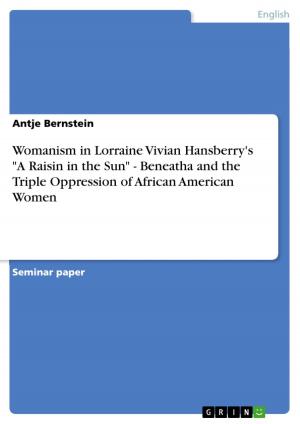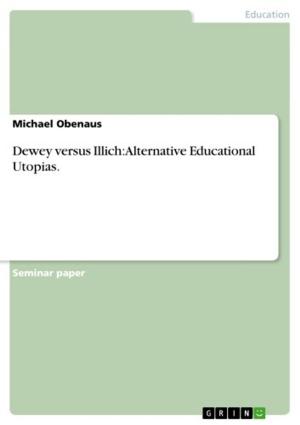The Potential for the Production of Bioenergy for Lighting and Cooking Using Jatropha (Jatropha curcas L. Euphorbiaceae) by Small Scale Farmers on the Kenyan Coast
Business & Finance, Economics| Author: | Fritjof Boerstler | ISBN: | 9783640722174 |
| Publisher: | GRIN Publishing | Publication: | October 13, 2010 |
| Imprint: | GRIN Publishing | Language: | English |
| Author: | Fritjof Boerstler |
| ISBN: | 9783640722174 |
| Publisher: | GRIN Publishing |
| Publication: | October 13, 2010 |
| Imprint: | GRIN Publishing |
| Language: | English |
Doctoral Thesis / Dissertation from the year 2010 in the subject Geography / Earth Science - Economic Geography, grade: Cum Laude, RWTH Aachen University, language: English, abstract: The overall objective of this study is to examine the potential of introducing renewable biomass for a decentralized household energy provision in rural areas at the Kenyan South Coast. The main question posed in this research is whether the renewable products of an oil tree and related energy end-use appliances could potentially be a cheap, widely available and socially accepted substitute for kerosene and traditional biomass. The research data and results are based on a UNDP GEF SGP funded pilot project. The project was conceptualized by the author and implemented with local communities with support from the German Development Service (DED), the World Wide Fund (WWF) and various government institutions in Kwale District between 2006 and 2010. The first theoretical part of this study describes the negative socio-economic, environmental and health related impacts of the current household energy provision and energy use in Developing Countries (DCs). It becomes obvious that the households' strong dependency on kerosene and traditional biomass severely hampers the achievement of national and international development goals. The potentials and barriers when introducing renewable energy technologies (RETs) in DCs are presented by using selected project examples. The discussion emphasizes that not only economical, institutional and infrastructural factors contribute to the low dissemination rates of RETs in DCs but also the social acceptance by potential users. Finally the results from this investigation are used to discuss the current and future household energy provision in Kenya. The second part of the study elaborates on the possibility of sustainably introducing the oil tree Jatropha curcas L. as a bioenergy source to rural households. For that purpose the feasibility of introducing the Jatropha value chain on a community level was tested and analyzed by taking three crucial aspects into consideration; the tree's environmentally sound production (cultivation), the economic transformation (processing) of the seed material into usable fuel and socially accepted end-usage of the Jatropha products. In this context the UN-funded project served as a baseline for the data collection. After conducting a socio-economic survey among 137 households participating in the project, the introduction of a Jatropha value chain was analyzed in three chronological steps. [...]
Doctoral Thesis / Dissertation from the year 2010 in the subject Geography / Earth Science - Economic Geography, grade: Cum Laude, RWTH Aachen University, language: English, abstract: The overall objective of this study is to examine the potential of introducing renewable biomass for a decentralized household energy provision in rural areas at the Kenyan South Coast. The main question posed in this research is whether the renewable products of an oil tree and related energy end-use appliances could potentially be a cheap, widely available and socially accepted substitute for kerosene and traditional biomass. The research data and results are based on a UNDP GEF SGP funded pilot project. The project was conceptualized by the author and implemented with local communities with support from the German Development Service (DED), the World Wide Fund (WWF) and various government institutions in Kwale District between 2006 and 2010. The first theoretical part of this study describes the negative socio-economic, environmental and health related impacts of the current household energy provision and energy use in Developing Countries (DCs). It becomes obvious that the households' strong dependency on kerosene and traditional biomass severely hampers the achievement of national and international development goals. The potentials and barriers when introducing renewable energy technologies (RETs) in DCs are presented by using selected project examples. The discussion emphasizes that not only economical, institutional and infrastructural factors contribute to the low dissemination rates of RETs in DCs but also the social acceptance by potential users. Finally the results from this investigation are used to discuss the current and future household energy provision in Kenya. The second part of the study elaborates on the possibility of sustainably introducing the oil tree Jatropha curcas L. as a bioenergy source to rural households. For that purpose the feasibility of introducing the Jatropha value chain on a community level was tested and analyzed by taking three crucial aspects into consideration; the tree's environmentally sound production (cultivation), the economic transformation (processing) of the seed material into usable fuel and socially accepted end-usage of the Jatropha products. In this context the UN-funded project served as a baseline for the data collection. After conducting a socio-economic survey among 137 households participating in the project, the introduction of a Jatropha value chain was analyzed in three chronological steps. [...]















